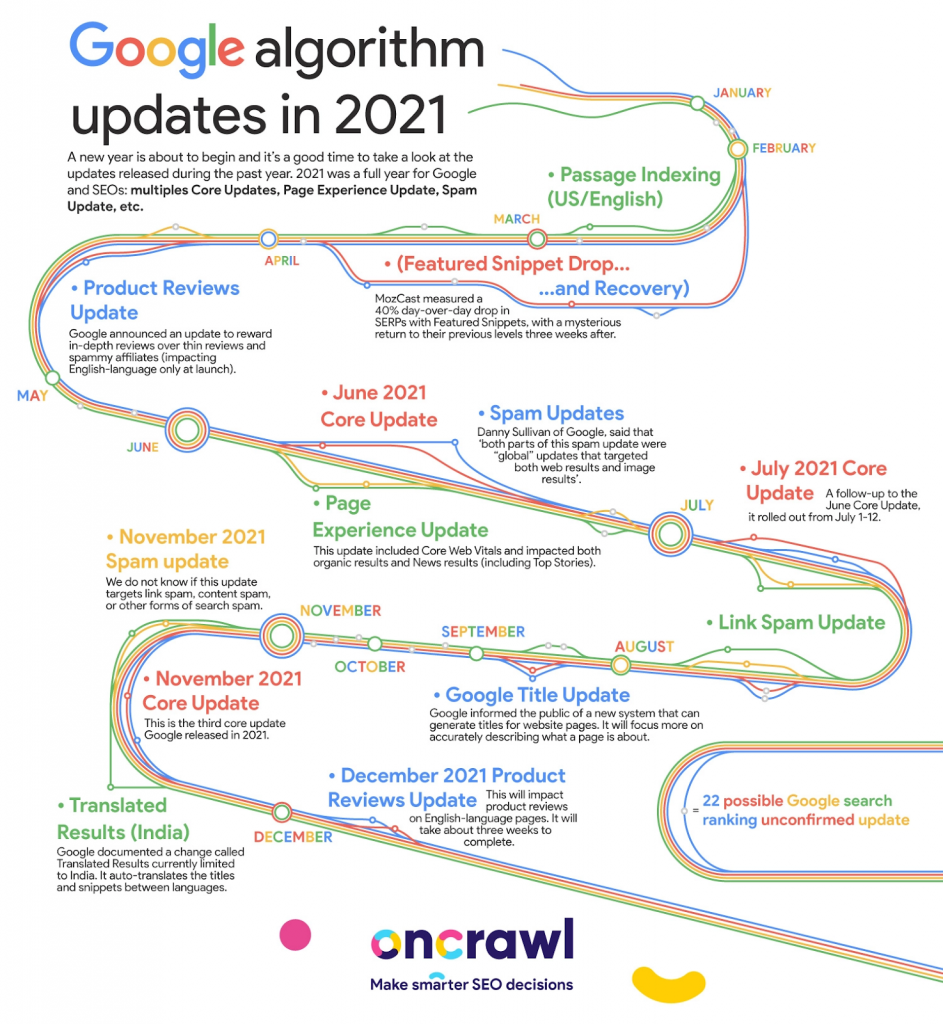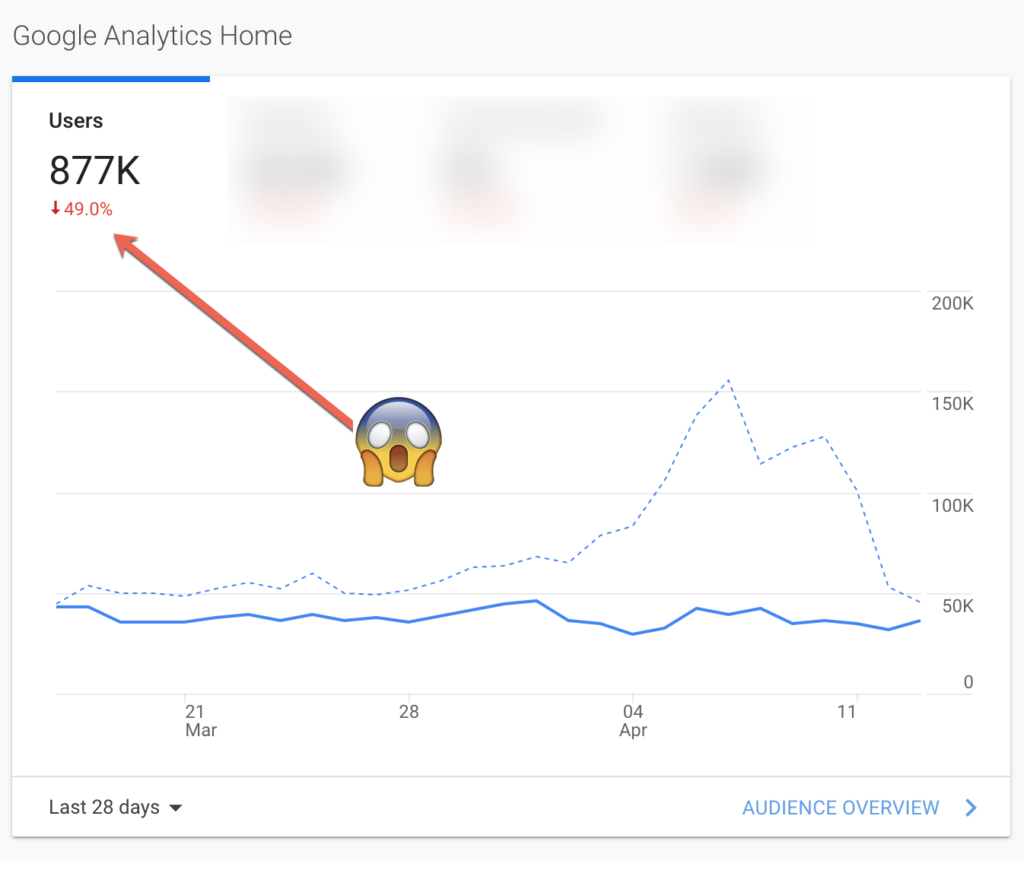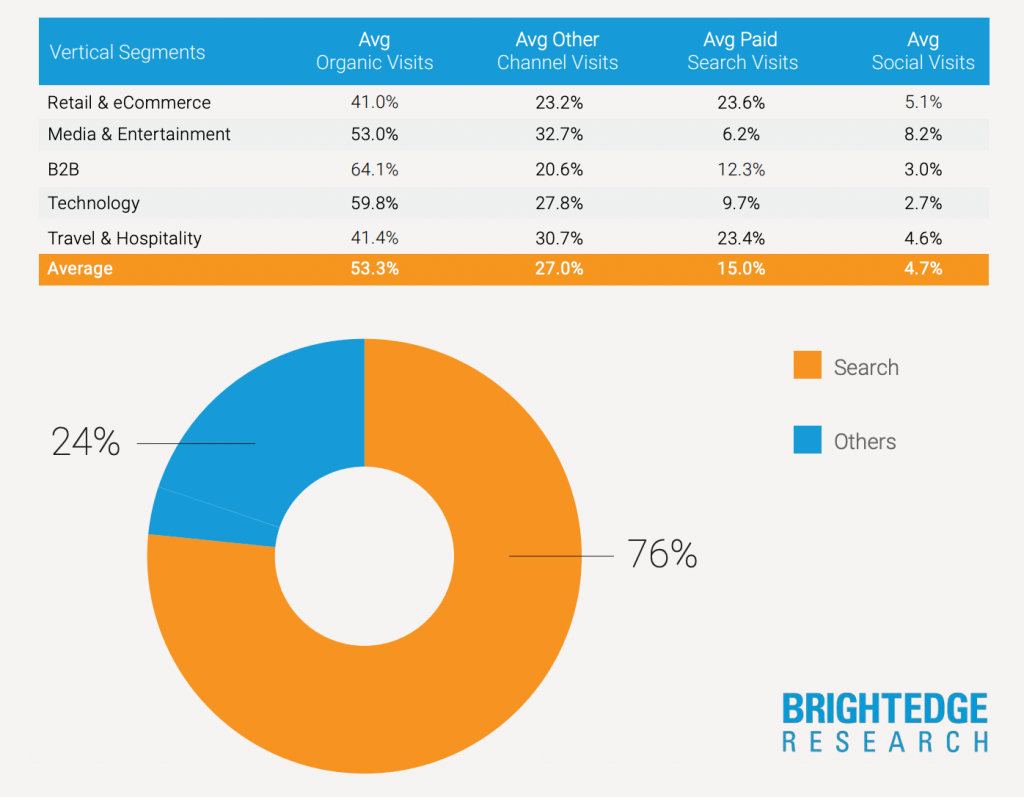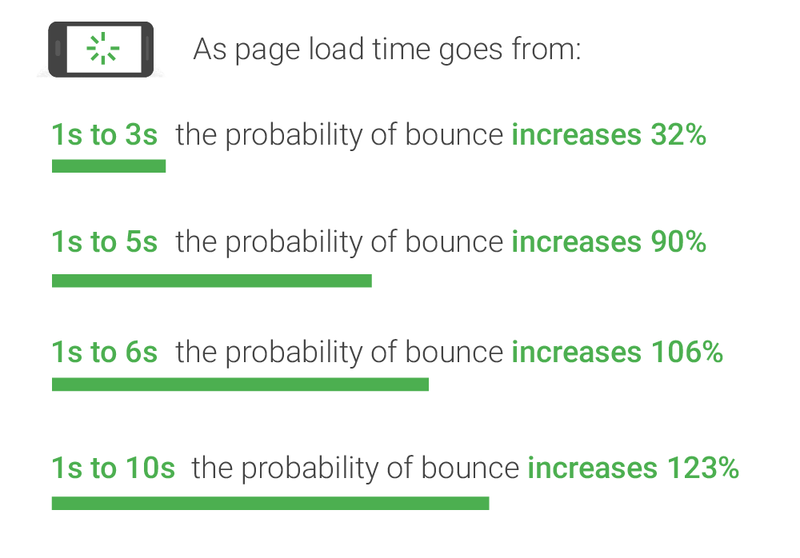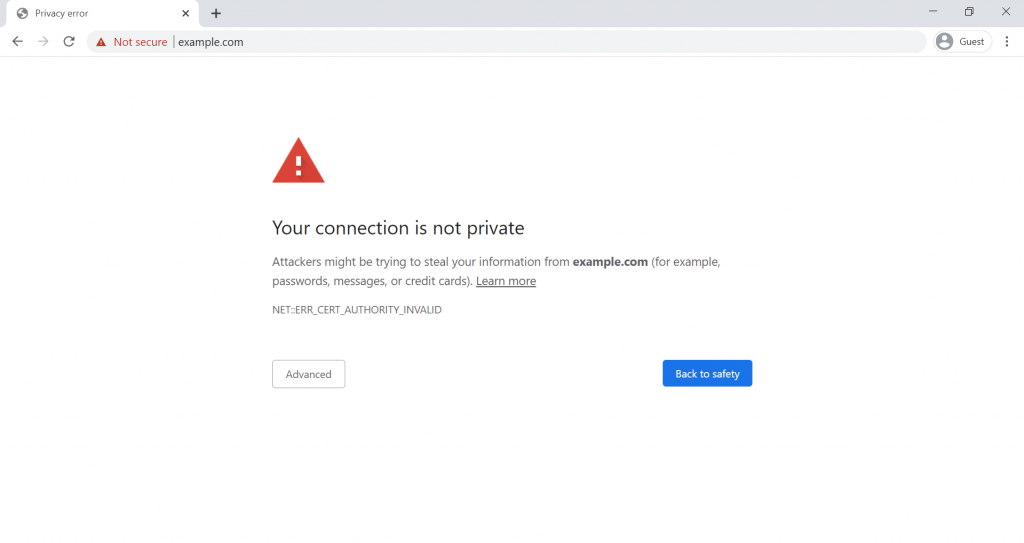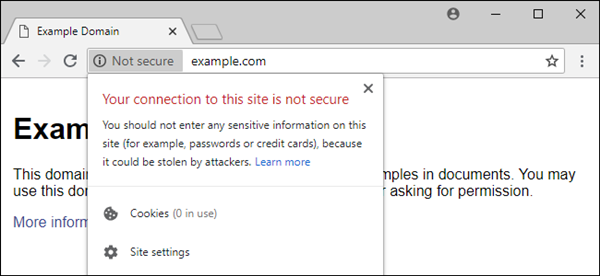Is your website traffic suddenly dropping? It feels terrifying, right?
By now, you have probably tried various ways to identify the exact reasons, yet you can’t find that missing piece.
Fortunately, the issue is quite common. However, the complexity can vary depending on the exact reasons causing the traffic drops. There are proven solutions that will definitely fix your problem and get your traffic back in an upward trend.
In this article, you will learn the possible reasons for your problem and the solutions for each.
5 Major Reasons & Solutions
1. Search Engine Algorithm Update
Renowned Search Engine Algorithm such as Google and Bing are constantly improving to enhance their search results. In such cases, new policies can be imposed and implemented with the update.
This can essentially put your website at risk as the new policies can flag your website for violations that didn’t exist in the former version. If you are unaware of the latest terms and policies and don’t act accordingly, you can suffer a huge organic traffic loss.
The downside here is that Search Engine providers such as Google won’t announce and outline algorithm updates. But, you’ll come across reports outlining the updates and changes in policy by researchers online.
The Search Engine Algorithm will de-rank your website on the SERP if your website doesn’t align with its latest terms and policies. In severe cases, your website can even get de-indexed if you don’t make the necessary changes in due time.
In such instances, it is essential to respond fast. Of course, you’ll receive warnings on Google Search Console, however tracking down the exact problem is more complicated than it might seem.
The changes in SEO practices need to be considered mainly for major updates. Google launches 500-600 minor updates every year. In comparison, major updates are launched only a few times annually. For instance, between 2014-2016, there have been significant changes in SEO practices, with two major updates in the year 2016 itself.
Solutions
You need to keep track of the updates and adapt accordingly. Now you might be wondering how to monitor the updates? We recommend the following ways,
- Set up Google Alerts – You will receive notification of any new change that comes with the update. You can customize the alerts based on a phrase, topic, frequency, source, and quality.
- Follow Industry Leaders and Top Competitors – Industry leaders often make statements about key updates and changes that require immediate attention, especially when it comes to major changes in SEO strategies.
Moreover, keep tabs on your competitors to see if they have made any significant changes to their website or changes in their SEO strategies. An effective way to do this is to sign up for email newsletters. At least in this way, you’ll get notified rather than searching manually all the time.
- Use Twitter – If you search for Google Updates or Google Algorithm Updates on Twitter, you’ll find numerous relevant results from renowned organizations, authority figures, influencers, industry experts, and other relevant sources.
Make sure to follow them as the updates are more likely to appear straight on your feed. You can also turn notifications on for specific pages.
For example, by searching ‘Google Algorithm Updates,’ we have come across the Google Algorithm Updates in 2021.
Source: Oncrawl’s Twitter Page
Now that you know how to track Google Algorithm updates, it is time to monitor real-time effects on your website traffic.
- Use Google Analytics – With this tool, you can monitor your website traffic and other metrics. If you notice any fluctuations or if your website traffic is drastically going down all of a sudden, then you’ll know that something is wrong.
Example of fluctuating website traffic on Google Analytics:
Source: Search Engine Watch
- Go for Professional SEO Audit – Fluctuating website traffic is an alarming situation. Yes, it can happen due to the Google algorithm update. Still, it can also happen due to other factors like duplicate content, poor quality content, poorly optimized content, low website speed, or even low-quality backlinks.
Now, it can get tricky to find out the exact cause of the issue for the massive drop in your website traffic. For starters, you can try out our Free SEO Audit. And if you think you need a more enhanced, in-depth SEO Audit report, then you can sign up for our Deep SEO Audit.
2. Indexing Issues
You should be careful that your website does not have any indexing issues as it can hamper your organic search traffic. Research statistics suggest that 53% of organic website traffic comes from search results, and overall, 75% comes from both organic and paid search traffic combined.
If the crawlers cannot index your site, it will not appear in relevant search results. So, those who are not aware of the existence of your business or are unaware of your web address won’t be able to find you.
What is causing the indexing issue?
There is this file called robot.txt. It is used to navigate the crawlers to your site. Also, you can specify the web pages on your site that you allow to be crawled and the ones you don’t.
Now, if you have accidentally blocked crawlers in the robot.txt file, search engines like Google won’t crawl your website. As a result, your website won’t appear on the search results page.
Another reason can be due to a Negative SEO attack, in which your competitors can have your website deindexed.
Solution
To solve the technical aspect of your website concerning the robot.txt issue, you can use robot.txt tester on Google Search Console. The robot.txt is essentially used to find whether the robot.txt file is blocking your website in the first place. And, if it is, then you will be able to see which web pages are being blocked or whether it’s your entire site.
Following through the steps, you can seamlessly edit the robot.txt file and choose the web pages that should be crawled. The best part is you can run real-time edits and test the robot.txt file on the tool itself.
But remember one thing, this is just a tester, so it does not apply to any actual changes on your original robot.txt file. So, after you are done, copy-paste the contents of the test tool to your original robot.txt file on your site.
Sounds too technical? Don’t worry! Our SEO Experts are ready to fix your indexing issue and get your website on search engine results ASAP.
We’ve also specified detailed solutions to the Negative SEO attacks.
3. Poor Quality Content
Aside from the issues discussed above, even if you are getting a good amount of traffic from SERP (Search Engine Page Results), if the content on your website lacks quality, it can trigger higher bounce rates and reduced visits.
You should have quality content on your website to attract potential customers and retain existing customers.
Think about it, what would your target audience look for on your website? They would look for information that appeals to their wants and needs. Okay, let’s say there is highly informative content but is difficult to understand for your target audience; this will leave them reluctant to go through your content.
So ultimately, they will abandon your website, and the chances are high that they won’t refer to your website again! That’s another way poor quality content can lead to a downfall in website traffic.
Also, keep in mind that you are probably in big trouble if you stuff your content with keywords to satisfy the crawler, you are probably in big trouble. According to Google Guidelines, using keywords that violate search intent or an attempt to rank higher on SERP can get you flagged and penalized.
This can get your website to the bottom of search engine results. And according to Hubspot’s research, 75% of users don’t scroll beyond the first page of search results. So, this can also lead to huge traffic losses from SERP.
Solution
- Compare with Competitors – The most effective way is to compare your content with your top competitors. See the information they have included in their content, the language they have used, and the length of each content based on their type. In this way, you’ll be able to compare how you can improve your existing content, and it will also give you a clear idea of how you can create future content.
- Search Intent – Make sure that your content serves the target audience’s search intent. Also, include relevant information that fulfills the purpose of the content’s topic. Don’t forget to check on coherence and cohesion. You need to ensure that your content is packed with logic, and the overall information needs to be consistent so that the reader can correlate and not feel lost.
- Refrain from creating Duplicate Content – Another important thing to ensure is to avoid copy-pasting from your sources. It might feel tempting to put the exact words, but this will get you penalized by Google for posting duplicate content as it is a clear violation according to Google Guidelines.
4. Poor Website Loading Speed
For instance, you have terrific content on your website, but it takes forever to load, people will get annoyed and ultimately leave your site. All that effort for producing quality content will go to waste.
Source: Website Builder Expert
So, what is the expected website loading speed?
According to Geoff Kenyon’s research, a website loading speed should range as follows,
- If your site loads in 5 seconds, it is faster than approximately 25% of the web
- If your site loads in 2.9 seconds, it is faster than approximately 50% of the web
- If your site loads in 1.7 seconds, it is faster than approximately 75% of the web
- If your site loads in 0.8 seconds, it is faster than approximately 94% of the web
According to Google’s Research bounce rate based on website loading speed,
Solution
Now that you are familiar with the expected website loading speed, your target should be to ensure that your website loads in less than 1 second.
First, it is essential to test your website’s loading speed. You can use Pingdom Website Speed Test, GTMetrix, and Google Pagespeed Insights.
4 Easy Ways to Increase Website Loading Speed
- Choose a better hosting solution – Cheap website hosting solutions get overloaded as they are connected to multiple websites. This can get the server worked up for which website loading speed can get delayed, and in more severe cases, your website might crash or suddenly become unreachable.
Subscribe to hosting solutions that prioritize performance to have a stable and fast website.
- Optimize and compress the images – Images with a large file size will take longer to load. You need to optimize your images and ensure their quality does not deteriorate. The most effective resolution would be to use automatic image optimizers. For starters, you can use free automatic image optimizers like Squoosh.
The image size can be reduced from 25% to 80%, making sure the images on your website are well optimized. Website image size should range between 300 KB to 1 MB at max. - Use a Content Distribution Network (CDN) – Network servers deliver the content data. Now, if your target audience’s location is further away, it will take them longer to load. The further the host server, the longer the loading time. So, if you use CDN, then copies of your site will be stored in different servers throughout the globe, ensuring a fast website loading speed.
- Reduce Redirects – Every time your website redirects, the visit will have to wait longer for the HTTP response cycle to complete.
You can use Patrick Saxton’s redirect mapper tool or Screaming Frog redirect checker to identify all unnecessary redirects from your website.
5. Website Security Issues
A common reason your website traffic fails is web safety concerns. If your website isn’t secure, visitors will be reluctant to enter your website and abandon it before it loads.
You have probably seen these notifications on your browser.
Ask yourself, would you be willing to visit a site if your browser warns you that it may not be safe. Most people, in this case, would close the tab and abandon the site.
The main reason is that the site does not have an SSL certificate. The SSL certificate is a security encryption protocol between a web server and a web browser. You need an SSL certificate to keep online transactions and customer information private and secure. Websites with SSL certificates will have links starting with HTTPS instead of HTTP.
Solution
First, you need to get an SSL certificate. You can get one by following the steps below,
- Get a dedicated IP Address for your website if you don’t have one yet.
- Contact your website host and tell them to activate your SSL certificate.
- Install the certificate on your domain.
The activation of the SSL certificate will take a few days. If you are struggling to acquire the SSL certificate due to a lack of technical expertise, you can always get help from our IT Experts.
Aside from these five major factors, you should also look into your backlinks and internal links. Although these factors won’t directly affect your website traffic, they can negatively impact your organic search engine rankings to an extent.
Its high time to restore your website traffic
Seeing your website traffic fall is stressful with a heavy toll on your business. Try implementing the solutions we have suggested, but if you face difficulties resolving the technical issues, then we are here to help.
Various factors can cause the downfall of your website traffic. Identifying a problem is the first step to solving it. So, if you want a full-fledged solution running a Deep SEO Audit would be the best and the safest option.
If you are struggling to resolve the technical issues, our IT Experts can resolve them.
You can also avail of our Free SEO consultation if you have doubts or need expert opinions.


